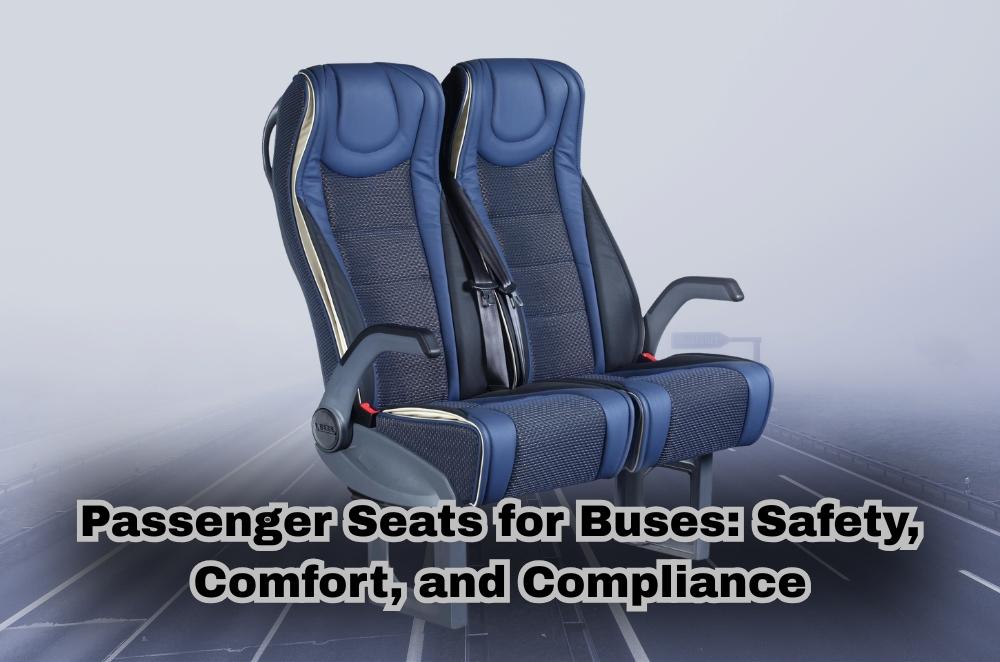Passenger Seats for Buses: Safety, Comfort, and Compliance

When you step onto a bus, you do not usually notice the seats—unless there is a problem. In commercial vehicles, especially buses that work the city or regional circuits, the passenger seats are more than a place to park yourself for a trip. They are a foundation for safety, a marker of compliance, and often the first thing a passenger really feels.
Years ago, when I first started working with transport operators, one fleet manager said to me, “Seats are invisible when they work, but a nightmare when they don’t.” That stuck with me. On buses, poor seating causes all sorts of headaches. Passengers complain, drivers get distracted, and inspectors pick up on the smallest issues. If you run a commercial fleet, especially buses, getting the seats right from the start just makes sense. It is about looking after your people and your business at the same time.
Staying safe and legal—no shortcuts on compliance
Australia does not mess around when it comes to bus safety. Every seat has to tick certain boxes, or your vehicle can be pulled off the road. I have seen plenty of operators try to cut corners, and it never ends well. The rules are clear. If you install new seats or update an older bus, you have to follow the Australian Design Rules. Inspectors care about seat strength, spacing, and especially how each seat attaches to the vehicle.
And there is more. Retrofitting? You must make sure everything lines up with the seats and seatbelts. I once worked with a bus operator in the west who got caught out. He bought a batch of discount seats online, only to find out they were not certified here. Failed inspection, parked buses, and a pile of paperwork. By the time it was sorted, he had lost a school run contract and had to pay for another set of seats. That was a hard lesson—do not gamble on compliance.
A few simple tips to avoid that mess
-
Get the right paperwork from your supplier. No paperwork, no deal.
-
Make a habit of checking your seats for loose bolts and worn covers.
-
Record every change or repair for future reference.
-
Do not leave things to the last minute. Inspections come up fast.
When you think about it, the cost of getting compliance wrong is not just a fine. You can lose contracts, frustrate your drivers, and damage your reputation.
Comfort counts more than you might think
Comfort and commercial buses? Some operators reckon passengers just want to get from A to B. That is not the whole story. Uncomfortable seats turn regular riders into one-timers. Word spreads. I have seen groups avoid booking with certain companies after a bad ride. All because of hard cushions, broken recliners, or seats that look like they belong in a museum.
If you are planning an upgrade, here is what works
-
Seats with padding that hold up through heavy use
-
Covers that you can clean without a struggle
-
Features like armrests or simple adjustments for longer trips
-
Materials that stand up to vandalism or the odd spilled drink
One company I helped had a rough school route—muddy uniforms, food spills, and a lot of bouncing around. They invested in seats that were easy to wipe down and a bit more robust than the standard fare. Complaints dropped, and the drivers finally stopped having to scrub stains every night.
Picking the right seat for your bus
Shopping for bus seats is nothing like buying furniture. You have to match what you choose with the routes you cover. School runs? Short city hops? Longer charters? It all matters. I always ask operators to list out their key needs before making a decision.
Consider these points
-
What kind of passengers are you carrying—students, tourists, commuters?
-
Does your supplier understand Australian rules and have proof of compliance?
-
Do you need features for accessibility, wheelchair spaces or easy entry?
-
How much time do you want to spend on repairs? Some seats are built tough, others need constant fixes.
And do not forget about the driver's seat. A comfortable driver is a safer driver. I have seen the difference.
Not all bus seats are the same
From basic bench seats to fancier reclining setups, there is a real spread. Standard seats work well for city buses that make a lot of stops. Reclining seats are better for coaches on long-distance trips. Then there are accessible options for passengers with disabilities.
In recent years, a few fleet operators have started trying car bucket seats. These are usually found in sports cars or premium vehicles, but they are turning up in high-end minibuses and some charter buses. The idea is to offer extra comfort, especially for VIPs or longer routes. I remember a coach company in the southern suburbs that swapped out their old seats for modular ones with washable covers. It cost a bit upfront, but it paid off over the winter season. The seats held up well after countless sporting trips, and they saved money on repairs and cleaning.
Keep your seats in top shape
Buying good seats is not the end of the story. Keeping them in top nick is just as important. I have always said that a regular maintenance routine keeps the inspectors and passengers happy. It also stops little issues from turning into major costs.
Here is what has worked for me
-
Monthly inspections for loose fixings and torn fabric
-
A stash of spare covers and seatbelt parts is ready to go
-
Staff who know what to look for and are quick to report damage
-
A solid deep clean at the end of every busy period
One bus operator I know tracks repairs and replacements on a simple spreadsheet. That way, they never miss a service date, and they can spot seats that are wearing out faster than expected.
Making every investment count
When you boil it all down, investing in the right passenger seats for buses pays off in more ways than one. Sure, you avoid fines and failed inspections, but you also give every rider a better experience. Your drivers are happier, your maintenance team has fewer headaches, and your business stands out for all the right reasons.
I always tell operators to get curious. Ask about certifications, double-check with government resources, and get suppliers to back up their claims. If something does not seem right, trust your gut and look elsewhere. The extra effort upfront makes a world of difference over time.
Quality vehicle seats are an investment, not a cost. If you want your fleet to go the distance, give your passengers a ride worth talking about—and make life easier for your whole team.






